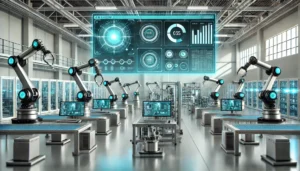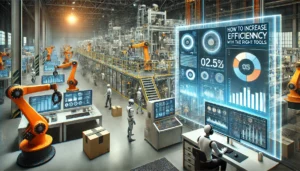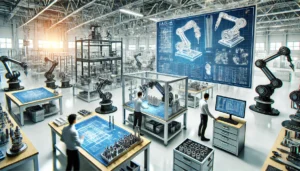In the contemporary world of manufacturing, measurement forms the basis of quality, safety, and overall engineering efficiencies. A factory’s operational goals are directly dependent on accurate use of measuring instruments. Below are some measures tools, among many others, that are critical to a factory’s operations.
1. Vernier Calipers
Vernier Calipers measure accuracy ranging from inside measurement to external dimensions and depth with astounding precision. These implements come with a main scale paired with a moving Vernier scale, providing measurements up to 0.02 millimeter. Their range of use includes measuring the diameter of shafts and holes and the thickness of metals. The digitally enhanced versions are simpler to read, which in turn means no extensive training is needed for the operators to get to work. These calipers are primarily used in the automotive, aerospace and metal fabrication industries. One key factor to the accuracy is the thorough cleaning and calibration of the tools.
2. Micrometers
Micrometers are specialized measuring instruments that gauge the distance between points with precision up to one seventy-sixth of an inch (0.001 mm). They can be further classified into outside, inside, and depth micrometers, each designed for a specific measurement. For example, outside micrometers measure the external dimensions of objects like the thickness of materials, while depth micrometers measure the depth of slots and recesses. Their ability to make precise measurements makes them very important for engineering and fine watchmaking. In order for the micrometers to maintain their precision, the spindle should be regularly lubricated and stored in careful conditions.
3. Coordinate Measuring Machines (CMMs)
CMMs are machines that measure the geometry of an object by using a probe. Each CMM consists of three axes marked X, Y, and Z, thus allowing for movement in the three-dimensional space. They can also be operated manually or using a computer. CMMs are of great importance when it comes to ensuring the accuracy of measurements of complex components. This way businesses know if the component will meet the requirements of the design. Most modern CMMs come with integrated software that will automatically generate reports for the user. Other industries that rely on these machines are automotive and aerospace, because ordinary components are rare in those fields. Regular maintenance and probe calibration will ensure that the machine performs to its best level.
4. Dial Indicators
Dial indicators are of great significance when it comes to measuring minute displacements or alterations in a component. They are utilized frequently during the assessment of the runout of rotating elements, the alignment of machinery, and the inspection of flatness or parallelism of surfaces. The apparatus contains a dial that is capable of displaying measurements whilst greatly magnifying small displacements of the probe. This means that it can read precise movements. The usage of dial indicators is very common for machine alignment and troubleshooting in heavy machinery manufacturing and automotive repair industries. It is important to ensure appropriate storage so that the sensitive probe is not damaged and maintained without losing the calibration.
5. Height gauges
Height gauges are appliances that are employed to quantify vertical distances with reference to a surface, in most cases a surface plate. It consists of a vertical scale with an adjustable slider and a measuring probe or a scriber. Height gauges are very critical when marking out workpieces and measuring the height of some components which require high precision. Digital height gauges provide advanced features that include improved accuracy, easier reading, and more efficient export of data for improved quality control measures. Height gauges are universal in industries producing parts with tight tolerances such as electronic parts as they are used for inspection and verification.
Importance of Maintenance and Training
Through effective usage and maintenance, the tools utilized can be much more beneficial than when they are improperly used. These devices are best when they are regularly calibrated because that maximizes their usefulness and also significantly reduces the errors that can occur when the device is misaligned or worn. Training staff to use these devices properly is a necessary component for accurate measurements. Wrong handling can result in damaged tools, increased costs of operation, and poor quality control.
Conclusion
The addition of these measuring instruments to the working tools of any factory is important to ensure that there is quality of the product and the factory remains productive. In modern times where manufacturing processes are becoming complex, the need for precise measurement tools has increased. Factories can now increase productivity, minimize material wastage, and comply with tough industry standards by using ion calibrated tools and properly trained operators. Advanced measuring technologies help factories keep up with the rapidly changing industrial environment.










